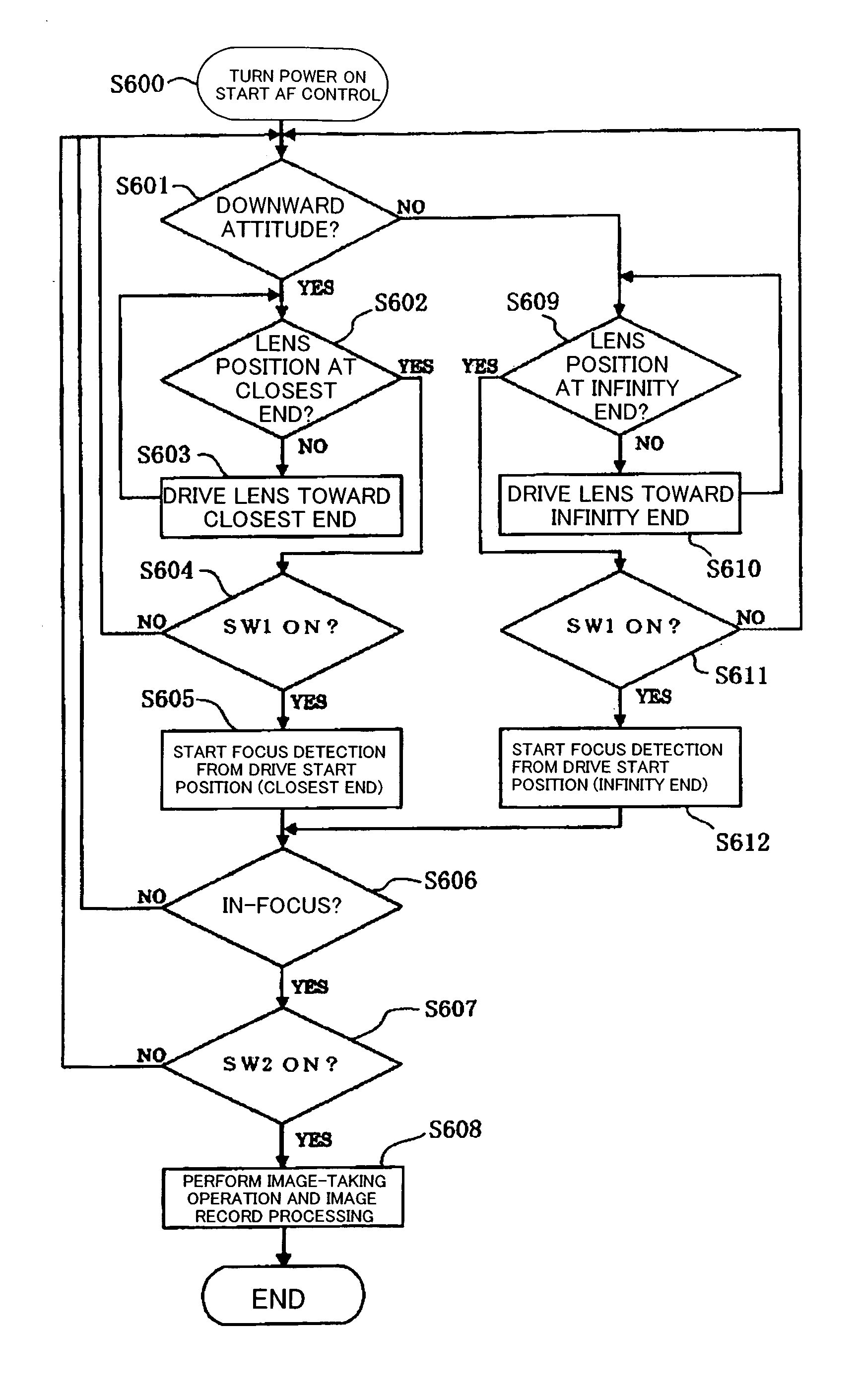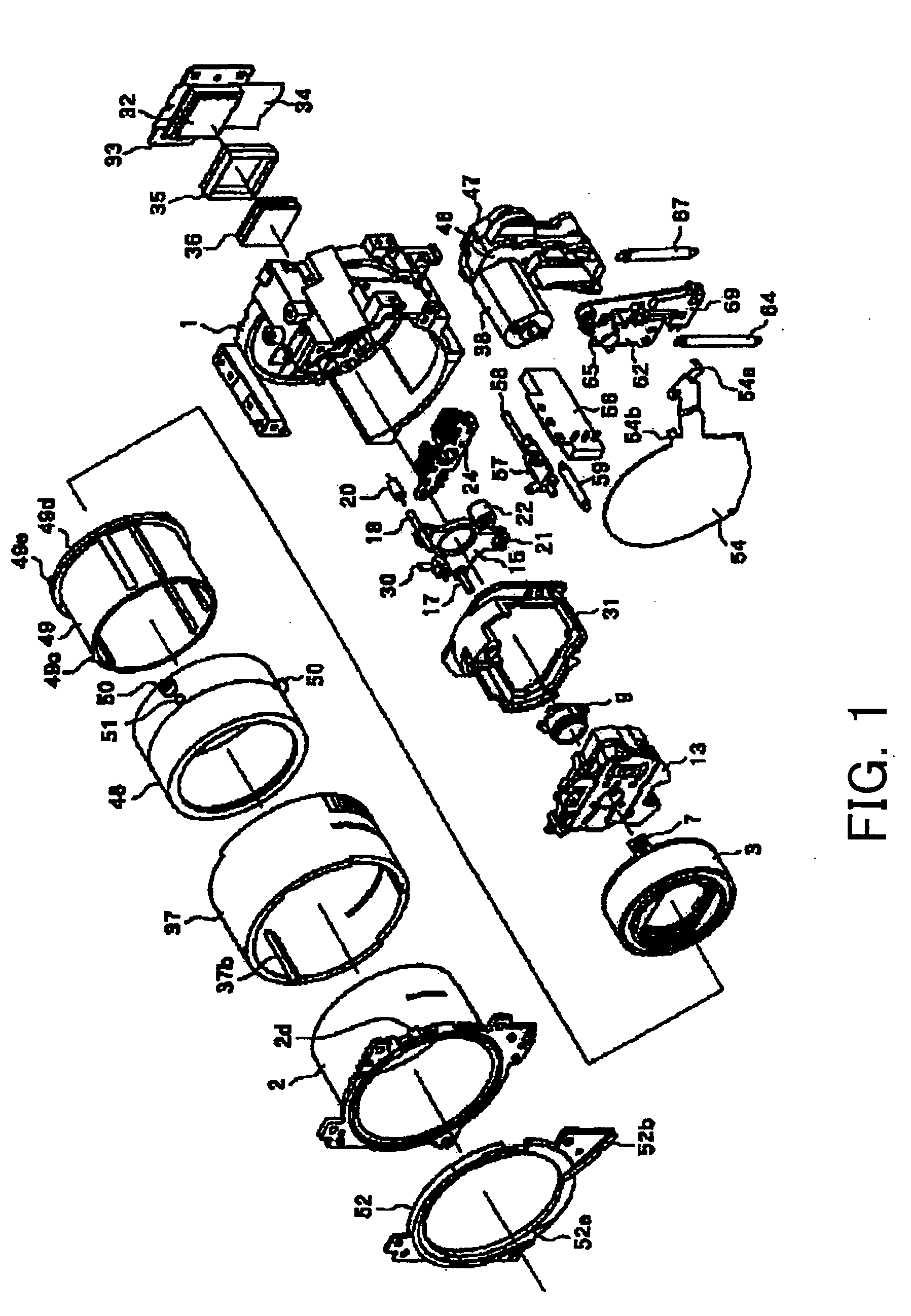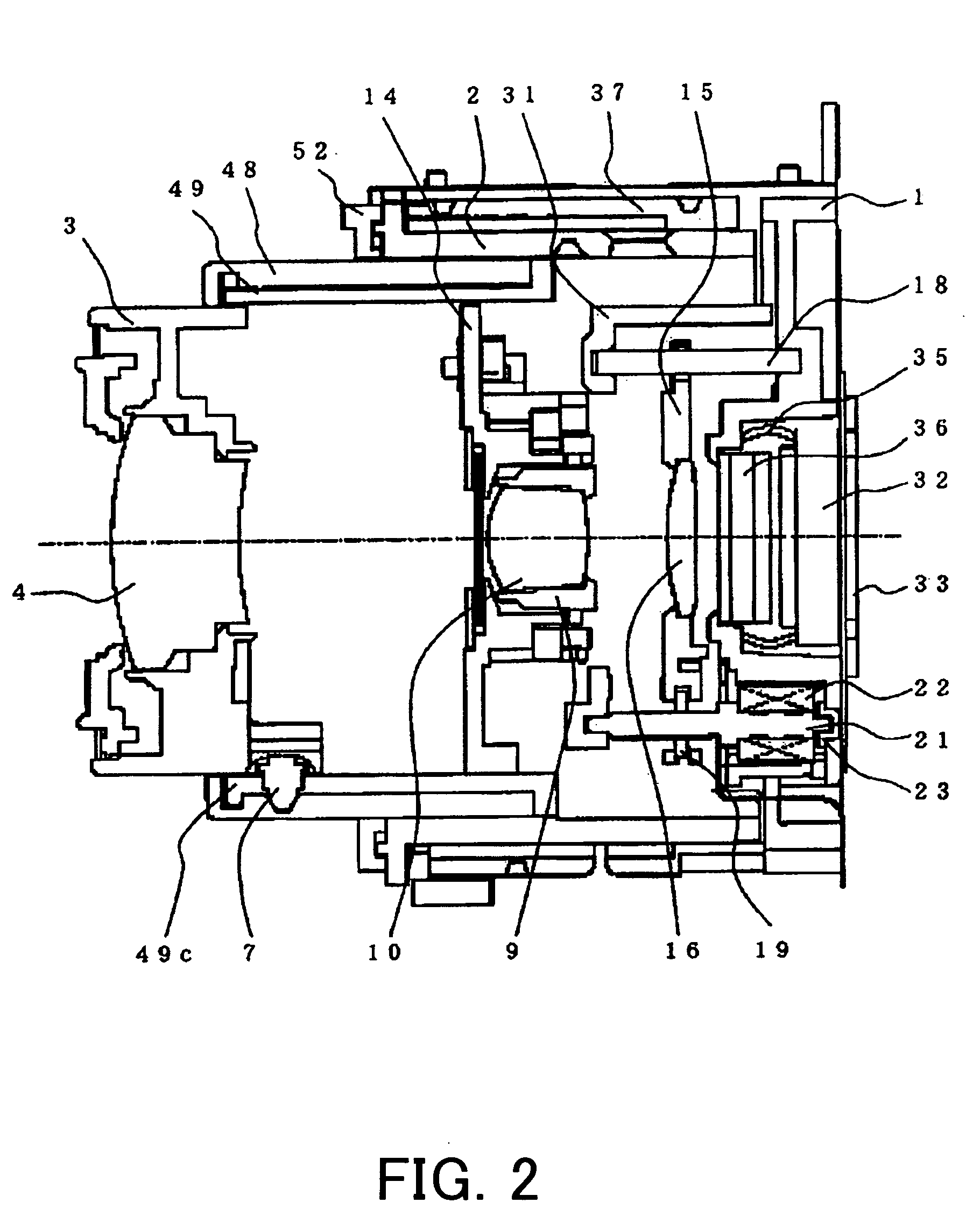Optical apparatus
- Summary
- Abstract
- Description
- Claims
- Application Information
AI Technical Summary
Benefits of technology
Problems solved by technology
Method used
Image
Examples
embodiment 1
[0040]FIG. 1 is a perspective exploded view of a lens barrel portion of a digital camera (optical apparatus) that is Embodiment 1 of the present invention. FIG. 2 is a section view of the center of the lens barrel at the closest end (wide position). Embodiment 1 will hereinafter be described with reference to FIGS. 1 to 8.
[0041] Reference numeral 1 shows a base serving as a base portion of a lens barrel unit and forms the structure of the lens barrel unit together with a fixed barrel 2, which is fixed to the front end of the base 1 by screws. Reference numeral 3 shows a first lens barrel unit, which holds a first lens 4. Three follower pins 7 each having a taper portion at the end are pressed into the outer peripheral surface.
[0042] Reference numeral 9 shows a second lens barrel unit which holds a second lens 10 and is integrally held on an aperture base plate 14 of an aperture unit 13 by means of adhesion or the like.
[0043] Reference numeral 15 shows a third lens barrel unit, wh...
embodiment 2
[0086] Embodiment 2 of the present invention will be described with reference to FIGS. 9 and 10. Embodiment 2 employs the “full range scan method” in the digital camera of Embodiment 1 described above, instead of the “climbing method,” to control (change) the drive range of the focus lens. FIG. 10 shows a flow chart of the operation of the digital camera in Embodiment 2. Since the other structures are identical to those in Embodiment 1, the description thereof will be omitted.
[0087] First, similarly to Embodiment 1, when the power switch of the digital camera is turned on, the attitude detector 71 detects the attitude of the digital camera and the image pick-up device 32 takes the image of a subject. Then, the drive control of the focus lens 16 is started (S700).
[0088] From step 701 to step 704 and from step 710 to step 712, operation similar to the processing from step 601 to step 604 and from step 608 to step 610 of Embodiment 1 described above is performed.
[0089] At step 702 o...
embodiment 3
[0101] Embodiment 3 of the present invention will hereinafter be described with reference to FIGS. 11 and 12. Embodiment 3 employs a light characteristic detector in Embodiment 1. FIG. 11 shows the main system structure of a digital camera in Embodiment 2. FIG. 12 shows a flow chart of the operation in Embodiment 3. Since the other structures are identical to those in Embodiment 1, the description thereof will be omitted.
[0102] The light characteristic detector 72 is a detector for detecting the type of a light source (natural light, artificial light or the like). The light characteristic detector 72 determines the light source based on its color temperature or temporal change (flicker), for example.
[0103] The temporal change of the light source is explained as follows. A fluorescent lamp produces flicker at twice the frequency of a commercial power supply and provides a waveform similar to that resulting from half-wave rectification of the power supply, and the maximum of the lig...
PUM
 Login to View More
Login to View More Abstract
Description
Claims
Application Information
 Login to View More
Login to View More - R&D
- Intellectual Property
- Life Sciences
- Materials
- Tech Scout
- Unparalleled Data Quality
- Higher Quality Content
- 60% Fewer Hallucinations
Browse by: Latest US Patents, China's latest patents, Technical Efficacy Thesaurus, Application Domain, Technology Topic, Popular Technical Reports.
© 2025 PatSnap. All rights reserved.Legal|Privacy policy|Modern Slavery Act Transparency Statement|Sitemap|About US| Contact US: help@patsnap.com



